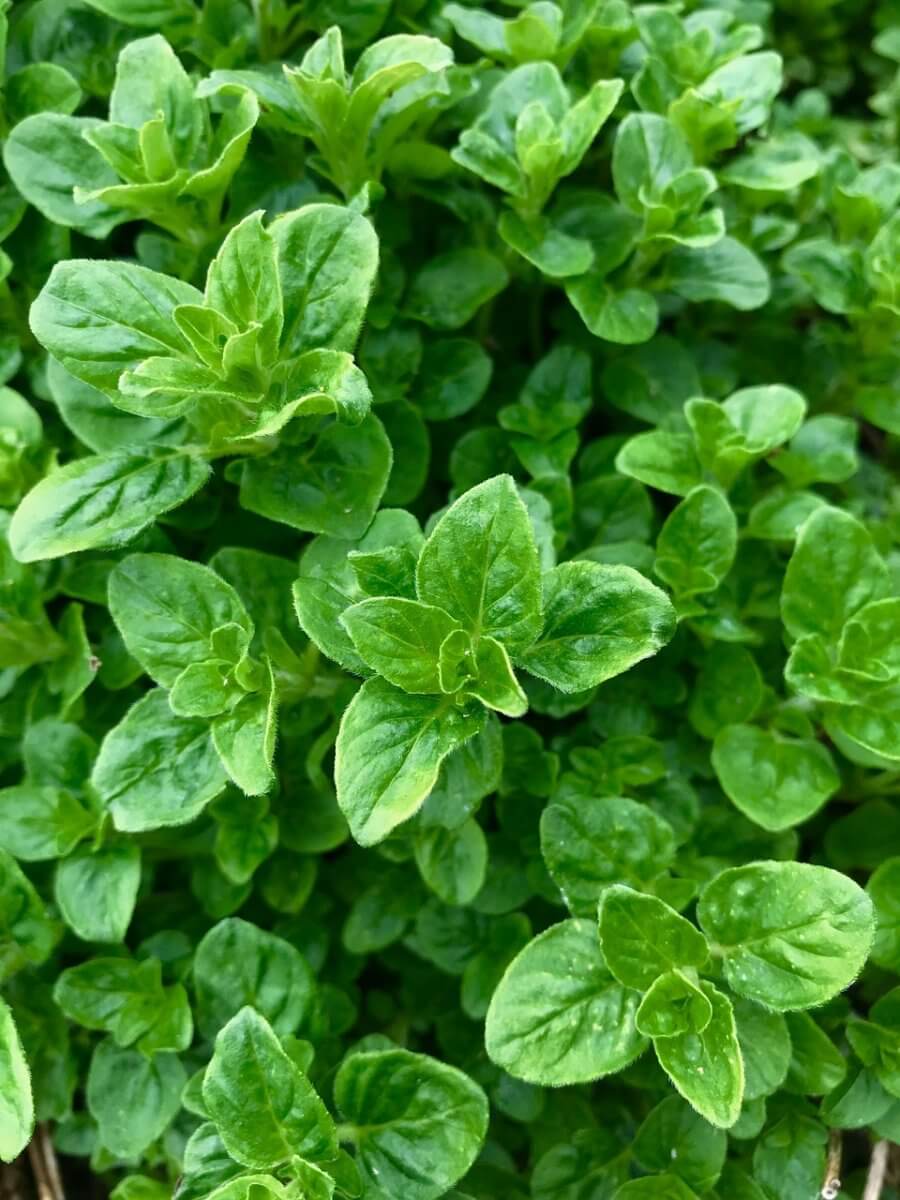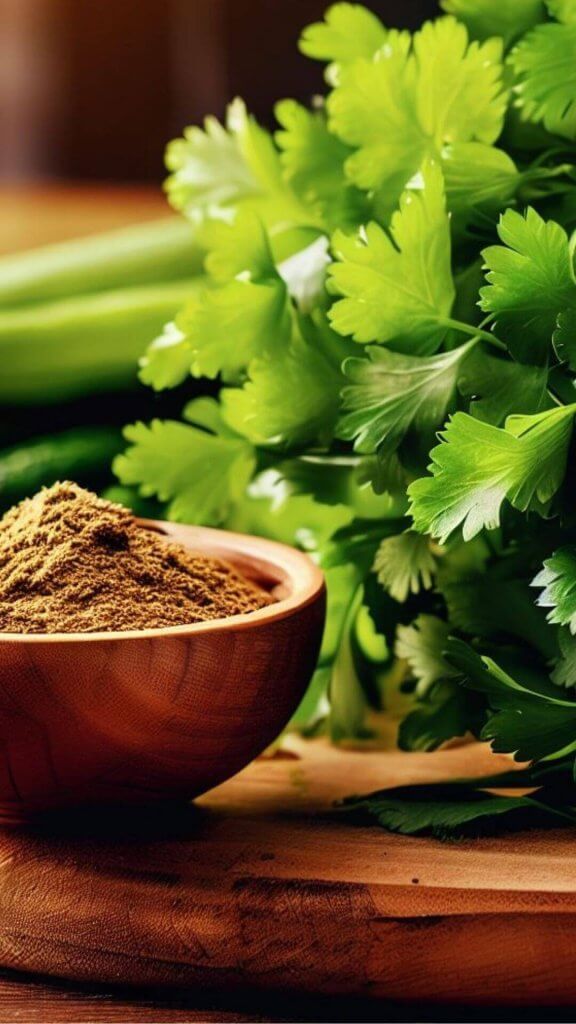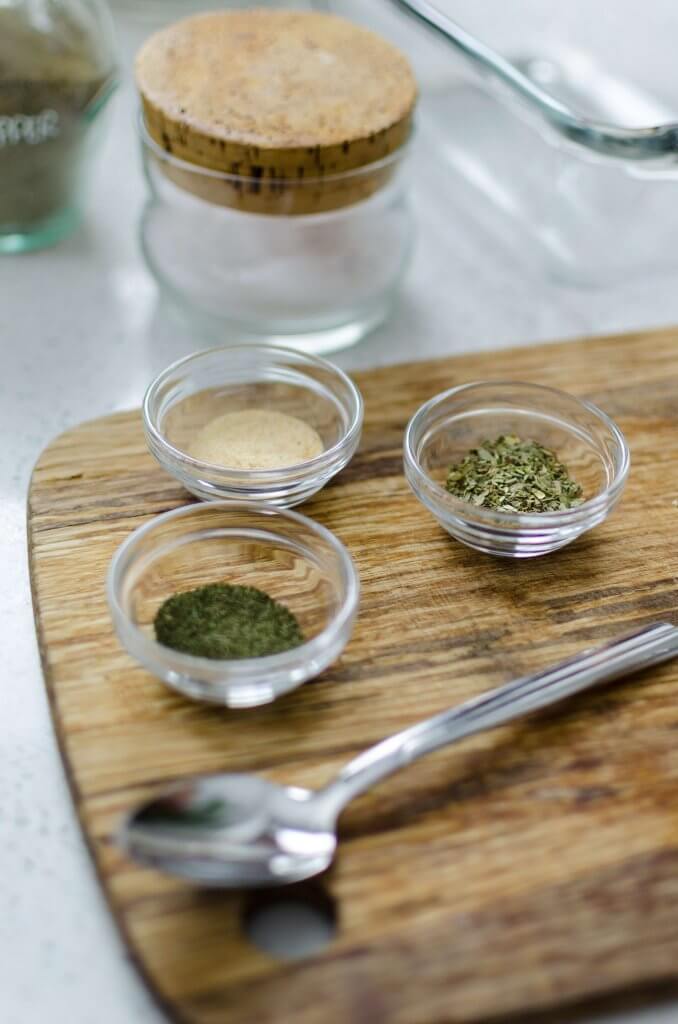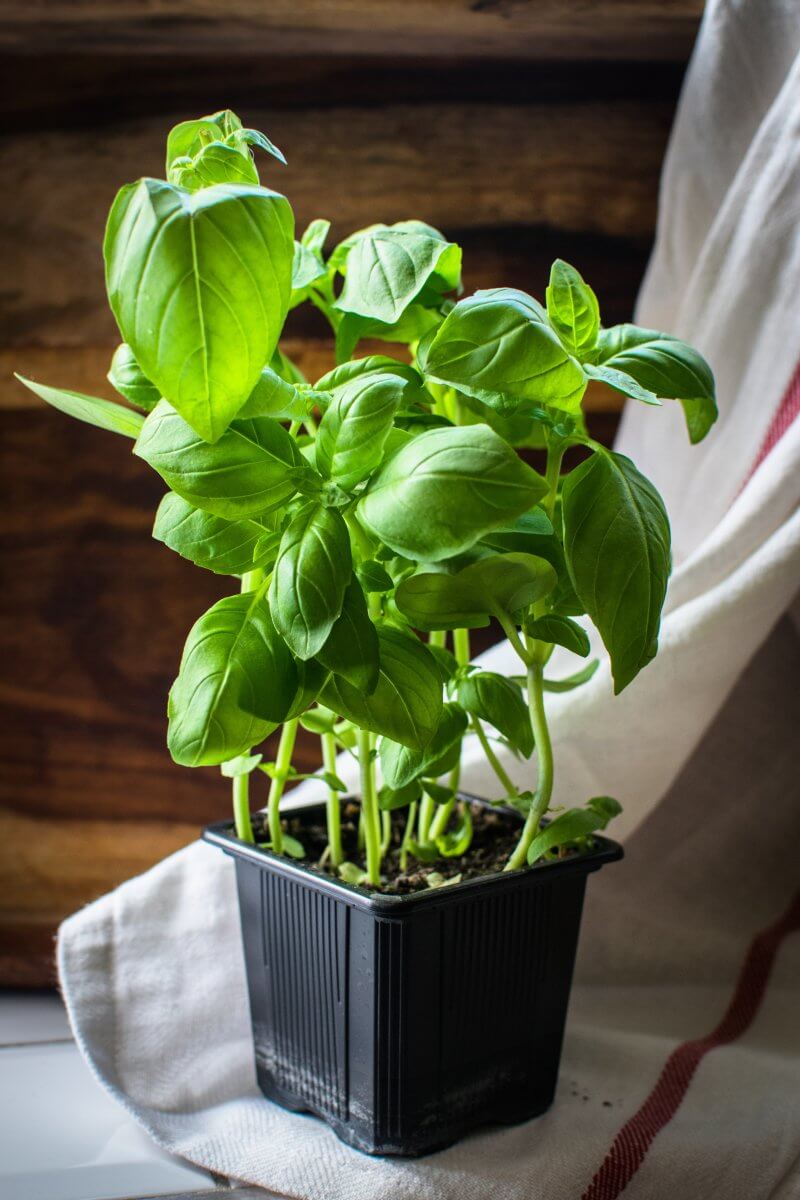What is the best substitute for Epazote?
Need a epazote substitute? Are you on the lookout for alternative ingredients, well, you’ve come to the right place. Let’s talk about epazote – a unique herb with a distinct flavor often used in Mexican and Central American cuisine. But what if you can’t find it in your local market or simply want to try something new? Don’t worry, I’ve got you covered with some fantastic epazote substitutes that can add a twist to your dishes. So, whether you’re in a pinch or just feeling adventurous, let’s explore these alternatives that will liven up your culinary creations.
Try using: Mexican Oregano, Cilantro & Corinader combo, Tarragon, Cilantro & Mint Blend, Fresh Marigold Leaves, Dried Mint & Oregano Mix, Basil, or Marjoram.
What is Epazote?
Epazote is acutally a herb commonly used in Mexican and Central American cooking, known for its bold and unique flavor. It is also known as “Mexican tea” or “wormseed.” The herb has a strong, pungent aroma and a slightly medicinal, citrusy, and earthy taste. It’s a key ingredient in various dishes like black bean soup, tamales, and quesadillas, where it imparts a distinctive, almost anise-like flavor. Besides its culinary uses, epazote is believed to have some medicinal properties so may to try using it to help with any potential digestive issues. So, it’s a flavorful and culturally significant herb that can add a unique twist to your recipes.
Okay, before we look at your epazote substitute options, let’s deal with that empty cupboard situation!
Where can I buy Epazote?
If you want to be more prepared and ensure you don’t run out of epazote, then you should stock up now.
Nowadays, most delicatessens and general supermarkets stock a wide variety of epazote. Or if you prefer you can also purchase epazote on-line.
So why not jump on and place your order today.
STOCK UP NOW!
A light pleasant aroma and taste from the moment you open the bag.
Use when cooking soups, stews, etc. Or infuse some in boiling water as an epazote tea.
What can I substitute for Epazote?
Here are some of the best ingredients to substitute the flavor and role that epazote provides in your recipes.
- Mexican Oregano
- Cilantro & Corinader combo
- Tarragon
- Cilantro & Mint Blend
- Fresh Marigold Leaves
- Dried Mint & Oregano Mix
- Basil
- Marjoram
Epazote substitutes
Mexican Oregano
Mexican oregano is a type of oregano with a distinct flavor that sets it apart from the normal Mediterranean oregano. It is native to Mexico and Central America. Mexican oregano has a citrusy, slightly earthy, and pungent taste, making it a perfect substitute for epazote in various recipes.
The quantity of Mexican oregano you’ll use as a substitute for epazote depends on your personal taste and the recipe you’re preparing. Generally, start with half the amount of epazote called for in the recipe and adjust from there.
Mexican oregano is typically available in dried leaf form. Before using it in your dish, consider lightly crushing or grinding the leaves. This will help release its aromatic oils and enhance its flavor.
Use Mexican oregano when creating Mexican and Central American dishes, such as soups, stews, sauces, and chili. It pairs particularly well with beans and other ingredients commonly cooked with epazote.
Remember that while Mexican oregano is a great substitute for epazote, it does have its own unique flavor. Therefore you should taste your dish as you go along and adjust the quantity of Mexican oregano to ensure it complements the overall flavor profile.
Using Mexican oregano as a substitute for epazote can add a delightful twist to your recipes while preserving the essence of Mexican and Central American cuisine.

Cilantro & Corinader combo
The Cilantro and Epazote Combo is a another creative way to replicate the flavor of epazote, especially if you can’t find epazote in your local market or prefer a readily available alternative. Here’s how you can use it as a substitute:
Ingredients:
- Fresh cilantro
- Ground coriander
Instructions:
Start by chopping fresh cilantro leaves, and don’t forget to use the stems. You can use both parts, as they each contribute unique flavors to your dish.
To mimic the earthy, citrusy, and slightly anise-like notes of epazote, add a pinch of ground coriander to the chopped cilantro. The coriander complements cilantro’s natural flavor and helps replicate the epazote taste.
You can use this cilantro and ground coriander blend in a variety of dishes, especially those traditionally calling for epazote. It works very well in Mexican and Central American recipes like black bean soup, tamales, quesadillas, or in fact any dish where epazote’s unique flavor is desired.
Remember that the exact proportions of cilantro to coriander can vary depending on your personal taste and the specific recipe. You should always start with a small amount and adjust as needed to achieve the desired flavor.
Keep in mind that this combination won’t perfectly replicate the taste of epazote, but it will add a delightful twist to your dishes while keeping them true to the essence of Mexican and Central American cuisine.

Tarragon
Tarragon is a herb known for its distinctive flavor and fragrance. It has a sweet, slightly anise-like, and mildly peppery taste. While it’s not an exact match for the flavor of epazote, tarragon can be an interesting substitute.
Use fresh or dried tarragon, depending on what’s available to you. Obviosuly fresh tarragon has a more vibrant flavor, but you can use dried tarragon if necessary.
Start by using tarragon sparingly. Its flavor can be quite intense, so you should only use about half the amount of epazote that the recipe calls for. You can always adjust later based on your taste preferences.
Use tarragon in dishes where the epazote’s anise-like notes are important. It pairs well with chicken, seafood, and also a wide range of vegetables. You can use it in soups, stews, and even in sauces for added depth of flavor.
Taste your dish as you go along and adjust the quantity of tarragon to ensure it complements the overall flavor profile without overpowering the other ingredients.
Tarragon provides a unique twist to dishes traditionally using epazote. While the flavor isn’t an exact match, it can add an interesting and delicious dimension to your culinary creations.

Cilantro & Mint Blend
A cilantro and mint blend is a combination of fresh cilantro and fresh mint, often used to infuse dishes with a bright, herbaceous, and slightly cool minty flavor. This mixture can serve as a refreshing substitute for epazote in recipes where the anise-like or earthy notes of epazote are not essential. Here’s how to use it:
Ingredients:
- Fresh cilantro
- Fresh mint
Instructions:
Wash and finely chop both the fresh cilantro and fresh mint. Chop up both the leaves and the stems of each bunch of herbs as they also are packed full of flavor.
Combine the two herbs in roughly equal proportions, but feel free to adjust the ratio based on your taste preferences and the specific recipe. Start with a small amount and increase if necessary.
Use the cilantro and mint blend in dishes such as salads, salsas, and marinades. It’s particularly refreshing in Mexican and Central American cuisine, where the cool mint complements the freshness of cilantro.
As you cook, taste your dish and adjust the quantity of the blend as needed to achieve the desired flavor. This combination won’t replicate the exact taste of epazote, but it offers a unique and vibrant twist to your recipes.
Using a cilantro and mint blend as a substitute for epazote adds a lively and herbaceous dimension to your dishes. It’s an excellent choice when you’re looking to experiment with fresh, bright flavors.

Fresh Marigold Leaves
Fresh marigold leaves, specifically from the Mexican marigold or Tagetes lucida, are a less common herb that can be used as a substitute for epazote in certain dishes. These leaves have a unique flavor that can bring a hint of the epazote-like taste to your recipes. Try using the leaves from the Mexican marigold plant.
You’ll need fresh marigold leaves from the Mexican marigold plant. If you have your own access to this herb, carefully harvest the leaves. Alternatively, you might find them at specialty stores or local markets.
Use the fresh marigold leaves in a 1:1 ratio with the amount of epazote required in your recipe. This will allow you to replicate the flavor more accurately.
Before adding the marigold leaves to your recipe, finely chop or tear them into smaller pieces to release their flavor.
Use fresh marigold leaves in Mexican and Central American dishes where you would traditionally use epazote, such as soups, stews, and beans. The marigold leaves will impart a similar, albeit milder, earthy and anise-like flavor.
As with any substitute, taste your dish as you go and adjust the quantity of marigold leaves to achieve the desired flavor.
Fresh marigold leaves can provide an interesting twist to your recipes when you’re in need of an epazote substitute. While the flavor isn’t an exact match, it can contribute to the overall essence of Mexican and Central American cuisine.

Dried Mint & Oregano Mix
A dried mint and oregano mix is a combination of two dried herbs, each with its own unique flavor profile. You can use this blend in recipes that call for epazote’s earthy and slightly anise-like notes. Here’s how to use it:
Ingredients:
- Dried mint
- Dried oregano
Instructions:
In a small bowl, mix dried mint and dried oregano in equal proportions. This combination offers a balanced flavor profile that can substitute for epazote.
You should start by using the dried mint and oregano blend in a 1:1 ratio with the amount of epazote required in your recipe. This will help replicate the flavor.
If the herbs are coarsely ground, consider crushing or grinding them further to release their aromatic oils and enhance their flavor.
Use this dried herb blend in Mexican and Central American recipes that traditionally call for epazote. It also works really well in soups, stews, sauces, and beans.
As you cook, taste your dish and adjust the quantity of the dried mint and oregano blend to ensure it complements the overall flavor without overpowering the other ingredients.
Using a dried mint and oregano mix as a substitute for epazote adds an earthy and herbal dimension to your dishes. While it won’t exactly replicate the taste of epazote, it provides a tasty alternative that’s readily available in most kitchens.

Basil
Basil is a well-known herb with a slightly sweet, aromatic, and herbaceous flavor. Use basil as a substitute where epazote’s anise-like notes are not critical to the final taste of the dish.
Start by washing and finely chopping fresh basil leaves. You can acutally use both the leaves and tender stems.
Use basil sparingly as a substitute for epazote. A good starting point is to use about half the amount of epazote called for in the recipe. You can adjust the quantity based on your taste and the specific dish you’re preparing.
Use basil can be in dishes that require a fresh, herbaceous flavor. It’s versatile and pairs well with Italian, Mediterranean, and even Mexican and Central American cuisines.
Remember that while basil provides a pleasant herbal flavor, it’s quite different from epazote. Taste your dish as you go and adjust the quantity of basil to ensure it complements the overall flavor profile without dominating the other ingredients.
Using basil as a substitute for epazote introduces a fresh and aromatic element to your recipes, even if it doesn’t precisely replicate epazote’s unique flavor. It’s a delightful alternative that you can adapt to various culinary styles.

Marjoram
Marjoram is a herb known for its sweet and mild flavor, with hints of citrus and pine. It’s a versatile herb that can be used as a substitute for epazote, especially when the latter is not available.
Marjoram is available in both dried and fresh forms. Dried marjoram is a convenient option for most recipes, but fresh marjoram leaves can be used for a more vibrant flavor.
Start by using marjoram sparingly, as its flavor can be quite potent. A good rule of thumb is to begin with about half the amount of epazote that the recipe calls for, and then adjust according to your taste.
If you’re using dried marjoram, you can crush it between your fingers or use a mortar and pestle to release its aromatic oils. If using fresh marjoram, finely chop the leaves.
Marjoram can be used in various dishes, including those where epazote’s herbal and slightly anise-like notes are desired. It’s particularly suitable for Mediterranean and Italian dishes but can also work well in Mexican and Central American recipes.
As with any substitute, taste your dish as you go and adjust the quantity of marjoram to achieve the desired flavor without overwhelming the other ingredients.
Marjoram provides a unique and aromatic twist to your recipes and is a versatile substitute for epazote, especially in dishes where epazote’s distinctive flavor is not a central element.

Summary for Epazote substitutes
Okay – that’s you all sorted with suitable substitutes for Epazote.
Of course, here’s a list of some great substitutes for epazote to enhance your culinary adventures:
- Mexican Oregano: Mexican oregano is a fantastic alternative, as it shares a similar citrusy and slightly earthy flavor profile. It’s readily available and can be used in the same quantity as epazote in your recipes.
- Cilantro and Epazote Combo: Mixing fresh cilantro with a touch of ground coriander can mimic the flavor of epazote, especially in dishes like beans and stews.
- Tarragon: Tarragon offers a hint of licorice flavor, which can work well in recipes that call for epazote’s anise notes. Use it sparingly, as tarragon can be quite intense.
- Cilantro and Mint Blend: For a twist, blend fresh cilantro and mint together. This combo can provide a pleasant contrast to the epazote flavor and works nicely in soups and sauces.
- Fresh Marigold Leaves: If you can find them, fresh marigold leaves have a flavor somewhat reminiscent of epazote and can be used in Mexican dishes as a substitute.
- Dried Mint and Oregano Mix: A combination of dried mint and oregano can offer a similar herbal complexity to epazote. This is a handy substitute for dishes like pozole or tamales.
- Basil: In a pinch, fresh basil can be used as a substitute, though it has a distinct flavor. It pairs well with the Mexican and Central American cuisines that commonly use epazote.
Remember, the exact substitute you choose will depend on your recipe and personal taste preferences, so don’t be afraid to experiment and discover what works best for your dishes. Happy cooking!
We have gathered together a lot more facts on ingredients such as herbs, spices, oils, nuts, etc. if you would like to learn some more.
Or if you need to swap out another ingredient have a look at our Substitutes section.

